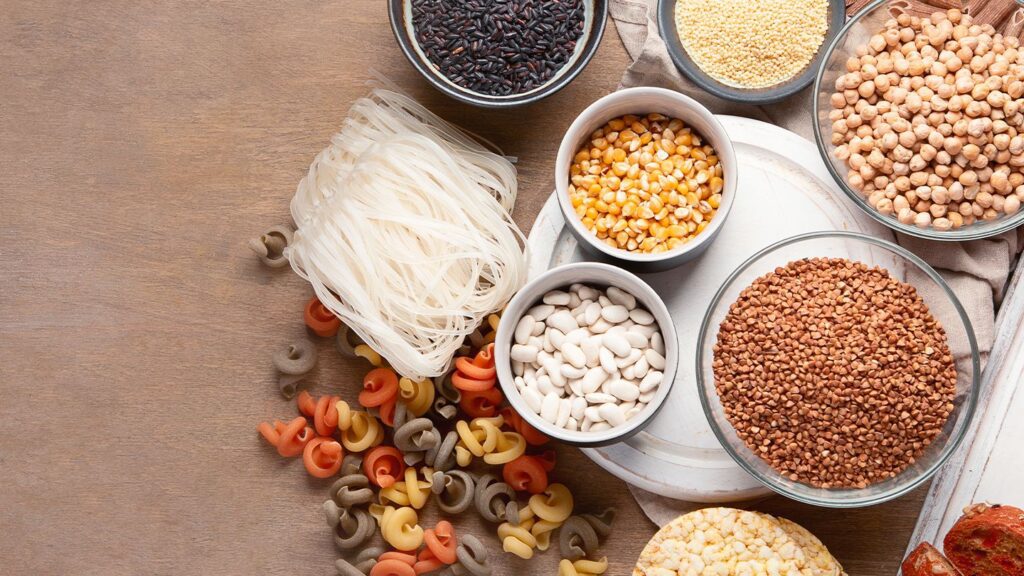A gluten-free diet avoids wheat, barley, and rye and their products like pasta, bread, and baked goods. Brown rice is high in fiber, antioxidants, and essential minerals and can be used in soups, salads, stir-fries, and more. Quinoa is a gluten-free grain that is high in protein, fiber, and amino acids and is perfect for salads, casseroles, and stews. Buckwheat seed is a versatile, high protein, fiber and mineral-rich grain that is gluten-free. Millet is a mild nutty, protein-rich, gluten-free grain that is ideal for casseroles, pilafs, and salads. Amaranth is a gluten-free grain that is high in protein, fiber, and minerals, making it perfect for porridges, puddings, and baked goods.
Gluten-Free Grains to Incorporate In Your Diet
Why Go Gluten-Free?
Going gluten-free has become more common in recent years due to an increase in awareness of gluten intolerance and celiac disease. Gluten is a protein found in wheat, barley, and rye, which can cause digestive problems, inflammation, and autoimmune disorders in some people. A gluten-free diet involves avoiding these grains and replacing them with alternatives that do not contain gluten.
Gluten-Free Grains
Brown Rice
Brown rice is a versatile and nutritious grain that is high in fiber, antioxidants, and essential minerals. It can be used in a variety of recipes, including stir-fries, salads, and soups. To cook brown rice, rinse it well and then add 2 cups of water for every cup of rice. Bring to a boil, reduce heat, and simmer for 45 minutes to an hour.
Quinoa
Quinoa is a popular gluten-free grain that is high in protein, fiber, and essential amino acids. It has a nutty and slightly chewy texture that makes it perfect for salads, stews, and casseroles. To cook quinoa, rinse it well and then add 2 cups of water for every cup of quinoa. Bring to a boil, reduce heat, and simmer for 15-20 minutes.
Buckwheat
Despite its name, buckwheat is not a type of wheat and does not contain gluten. It is a grain-like seed that is high in protein, fiber, and essential minerals. Buckwheat flour can be used to make pancakes, waffles, and baked goods, while the whole seeds can be cooked like rice or used in salads and stir-fries.
Millet
Millet is a small gluten-free grain that is high in protein, fiber, and essential nutrients. It has a mild, nutty flavor and a fluffy texture that makes it great for pilafs, casseroles, and salads. To cook millet, rinse it well and then add 2 cups of water for every cup of millet. Bring to a boil, reduce heat, and simmer for 20-25 minutes.
Amaranth
Amaranth is a tiny gluten-free grain that is high in protein, fiber, and essential minerals. It has a slightly sweet and nutty flavor, and a gelatinous texture that is great for porridges, puddings, and baked goods. To cook amaranth, rinse it well and then add 2 cups of water for every cup of amaranth. Bring to a boil, reduce heat, and simmer for 20-25 minutes.
Gluten-Free Recipes
Quinoa and Vegetable Stir-Fry
- 1 cup quinoa
- 2 cups water
- 1 tbsp olive oil
- 1 onion, chopped
- 1 red pepper, chopped
- 1 green pepper, chopped
- 1 zucchini, chopped
- 1 cup chopped broccoli
- 2 cloves garlic, minced
- 1 tbsp soy sauce
- 1 tsp sesame oil
- Salt and pepper to taste
1. Rinse quinoa and add it to a pot with water. Bring to a boil, reduce heat, and simmer for 15-20 minutes.
2. In a large skillet or wok, heat olive oil over medium-high heat. Add onion and cook until softened.
3. Add red pepper, green pepper, zucchini, and broccoli to the pan. Cook until vegetables are tender-crisp.
4. Add garlic, soy sauce, sesame oil, salt, and pepper to the pan. Cook for another minute.
5. Serve stir-fry over cooked quinoa.
Buckwheat Pancakes
- 1 cup buckwheat flour
- 1 tsp baking powder
- 1 tsp sugar
- Pinch of salt
- 1 egg
- 1 cup milk
- 1 tbsp vegetable oil
1. In a mixing bowl, combine buckwheat flour, baking powder, sugar, and salt.
2. In a separate bowl, beat egg and add milk and vegetable oil. Mix well.
3. Add liquid ingredients to dry ingredients and stir until just combined. Do not overmix.
4. Heat a non-stick skillet over medium heat. Add batter to the pan using a quarter-cup measure.
5. Cook for 2-3 minutes on each side, or until pancakes are golden brown and cooked through.
6. Serve with your favorite toppings, such as maple syrup or fresh fruit.
Millet Salad
- 1 cup millet
- 2 cups water
- 1 red bell pepper, chopped
- 1 yellow bell pepper, chopped
- 1 cucumber, chopped
- 1 tomato, chopped
- 1/2 cup chopped fresh parsley
- 1/2 cup chopped fresh mint
- 1/4 cup olive oil
- 2 tbsp lemon juice
- 1 clove garlic, minced
- Salt and pepper to taste
1. Rinse millet and add it to a pot with water. Bring to a boil, reduce heat, and simmer for 20-25 minutes.
2. In a large mixing bowl, combine cooked millet, bell peppers, cucumber, tomato, parsley, and mint.
3. In a small mixing bowl, whisk together olive oil, lemon juice, garlic, salt, and pepper.
4. Drizzle dressing over salad and toss to combine.
5. Chill salad in the refrigerator for at least an hour before serving to allow flavors to meld.
Conclusion
By incorporating gluten-free grains into your diet, you can enjoy a wider variety of nutritious and flavorful foods while avoiding the digestive issues and inflammation that can come with gluten intolerance. Try experimenting with different grains and recipes to find your favorites.
